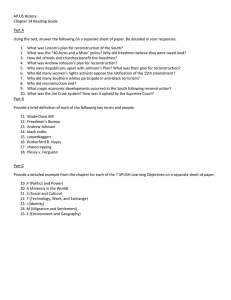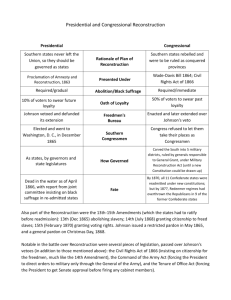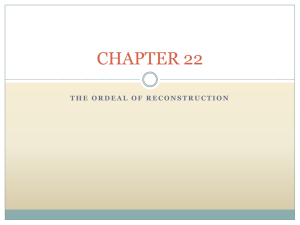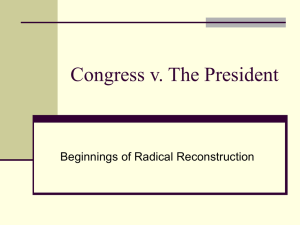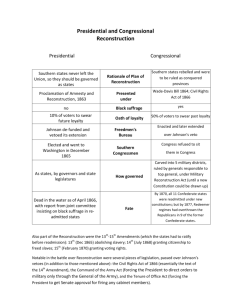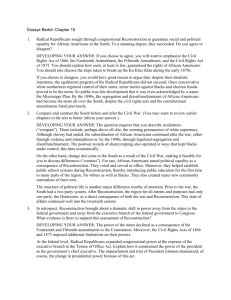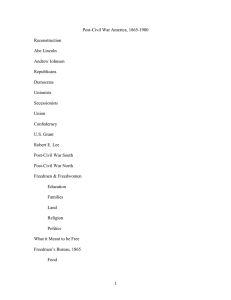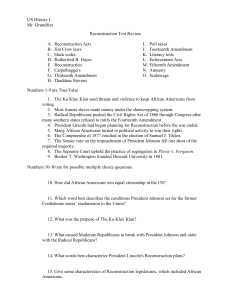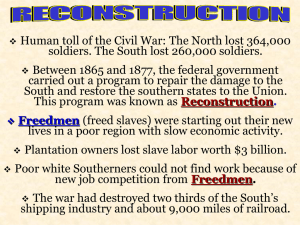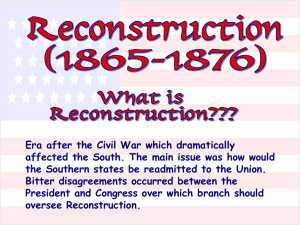Reconstruction Quiz Study Guide
advertisement
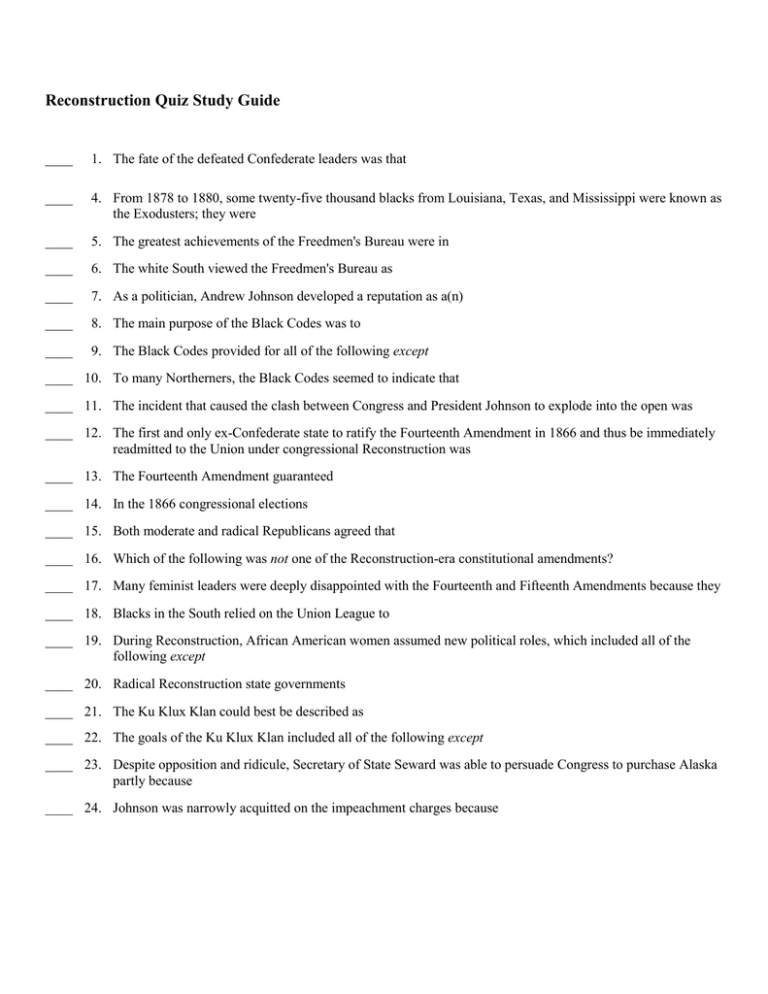
Reconstruction Quiz Study Guide ____ 1. The fate of the defeated Confederate leaders was that ____ 4. From 1878 to 1880, some twenty-five thousand blacks from Louisiana, Texas, and Mississippi were known as the Exodusters; they were ____ 5. The greatest achievements of the Freedmen's Bureau were in ____ 6. The white South viewed the Freedmen's Bureau as ____ 7. As a politician, Andrew Johnson developed a reputation as a(n) ____ 8. The main purpose of the Black Codes was to ____ 9. The Black Codes provided for all of the following except ____ 10. To many Northerners, the Black Codes seemed to indicate that ____ 11. The incident that caused the clash between Congress and President Johnson to explode into the open was ____ 12. The first and only ex-Confederate state to ratify the Fourteenth Amendment in 1866 and thus be immediately readmitted to the Union under congressional Reconstruction was ____ 13. The Fourteenth Amendment guaranteed ____ 14. In the 1866 congressional elections ____ 15. Both moderate and radical Republicans agreed that ____ 16. Which of the following was not one of the Reconstruction-era constitutional amendments? ____ 17. Many feminist leaders were deeply disappointed with the Fourteenth and Fifteenth Amendments because they ____ 18. Blacks in the South relied on the Union League to ____ 19. During Reconstruction, African American women assumed new political roles, which included all of the following except ____ 20. Radical Reconstruction state governments ____ 21. The Ku Klux Klan could best be described as ____ 22. The goals of the Ku Klux Klan included all of the following except ____ 23. Despite opposition and ridicule, Secretary of State Seward was able to persuade Congress to purchase Alaska partly because ____ 24. Johnson was narrowly acquitted on the impeachment charges because
